Smart Customizable Spinning System †
Abstract
1. Introduction
2. Related Research and Technologies
2.1. Fitness System for Smart Home
2.2. Attractive Factors of Indoor Cycling
2.3. Effects of Exercise on Schizophrenia
2.4. Technologies
2.4.1. DevKitC-32U
2.4.2. KY-024/49E Hall Sensor
2.4.3. Spark Fun Serial Graphic Liquid Crystal Display 128 × 64
2.4.4. Arduino IDE
2.4.5. XAMPP
2.4.6. Google Cloud
2.4.7. Google Fit
2.4.8. Open Artificial Intelligence (AI) Whisper
2.4.9. Python-Google Text-to-Speech (gTTs)
2.4.10. ECharts
2.4.11. MQTTX
3. System Design and Process Flow
3.1. Overall Design Description
3.2. Subsystem Process Flows
3.2.1. Health Monitoring Process Flow
3.2.2. Central Computing Process Flow
3.2.3. Flywheel Process Flow
3.2.4. Voice Interaction Process Flow
3.2.5. Notification Process Flow
3.2.6. Query Process Flow
4. Implementation and Demonstration
4.1. Health Monitoring Demonstration
4.2. Central Computing Demonstration
4.3. Flywheel Demonstration
4.4. Voice Interaction Demonstration
4.5. Notification Demonstration
4.6. Query Demonstration
5. Conclusions
Author Contributions
Funding
Institutional Review Board Statement
Informed Consent Statement
Data Availability Statement
Conflicts of Interest
References
- Wang, N.-C.; Chung, T.-C.; Lee, P.-H.; Chang, C.-C. A Fitness System for Smart Home. Undergraduate Capstone Project, Department of Computer Science and Information Engineering, National United University, 2021. Available online: https://csie.nuu.edu.tw/var/file/41/1041/img/1125/226244637.pdf (accessed on 31 May 2025).
- Lin, P.-W. Attractive Factors of Regular Users to Fitness Indoor Cycling. Master’s Thesis, Department of Industrial Design, Tunghai University, Taichung, Taiwan, 2022. Available online: https://hdl.handle.net/11296/k3x6ek (accessed on 31 May 2025).
- Chang, D.Y.; Kuo, Y.-C.; Liao, Y.-H. Effects of Exercise Training on Schizophrenia Disorders. J. Sports Res. 2020, 29, 51–58. [Google Scholar] [CrossRef]
- Taiwansensor. SP32-DevKitC Espressif Systems WROOM-32U Development Board ESP32-D0WD External Antenna. Available online: https://www.taiwansensor.com.tw/product/esp32-devkitc-espressif-systems (accessed on 31 May 2025).
- ArduinoModules.info. KY-024/49E Hardware Introduction. Available online: https://arduinomodules.info/ky-024-linear-magnetic-hall-module/ (accessed on 31 May 2025).
- Mouser Electronics. SparkFun Serial Graphic LCD 128 × 64-LCD-09351. Available online: https://www.mouser.com/ProductDetail/SparkFun/LCD-09351/?qs=WyAARYrbSnb2niE0kKmc5g%3D%3D (accessed on 31 May 2025).
- Wikipedia Contributors. Arduino. Wikipedia, The Free Encyclopedia. Available online: https://zh.wikipedia.org/zh-tw/Arduino (accessed on 31 May 2025).
- Arduino. Arduino IDE Introduction. Available online: https://www.arduino.cc/en/Guide/Introduction (accessed on 31 May 2025).
- Wikipedia Contributors. XAMPP. Wikipedia, The Free Encyclopedia. Available online: https://zh.wikipedia.org/zh-tw/XAMPP (accessed on 31 May 2025).
- Google Cloud. Google Cloud Official Website. Available online: https://cloud.google.com/?hl=zh-tw (accessed on 31 May 2025).
- Wikipedia Contributors. Google Cloud Platform (GCP). Wikipedia, The Free Encyclopedia. Available online: https://zh.wikipedia.org/zh-tw/Google%E9%9B%B2%E7%AB%AF%E5%B9%B3%E5%8F%B0 (accessed on 31 May 2025).
- Google. Google Fit. Available online: https://www.google.com/fit/ (accessed on 31 May 2025).
- OpenAI. Whisper: Robust Speech Recognition via Large-Scale Weak Supervision. GitHub Repository, 2022. Available online: https://github.com/openai/whisper (accessed on 31 May 2025).
- Bain, M. WhisperX: Automatic Speech Recognition with Word-Level Timestamps (& Diarization). Available online: https://github.com/m-bain/whisperX (accessed on 31 May 2025).
- Kumar, A. Text-to-Speech | gTTs Python Module. DEV Community. Available online: https://dev.to/anandraz/text-to-speech-gtts-python-module-5bfh (accessed on 31 May 2025).
- Lee, T. Five Great Reasons to Recommend! ECharts Powerful Visualization Chart Library. Medium. Available online: https://tonyaleelucky.medium.com/346b4e830dc2 (accessed on 31 May 2025).
- MQTTX. Introduction-MQTTX Documentation. Available online: https://mqttx.app/zh/docs (accessed on 31 May 2025).
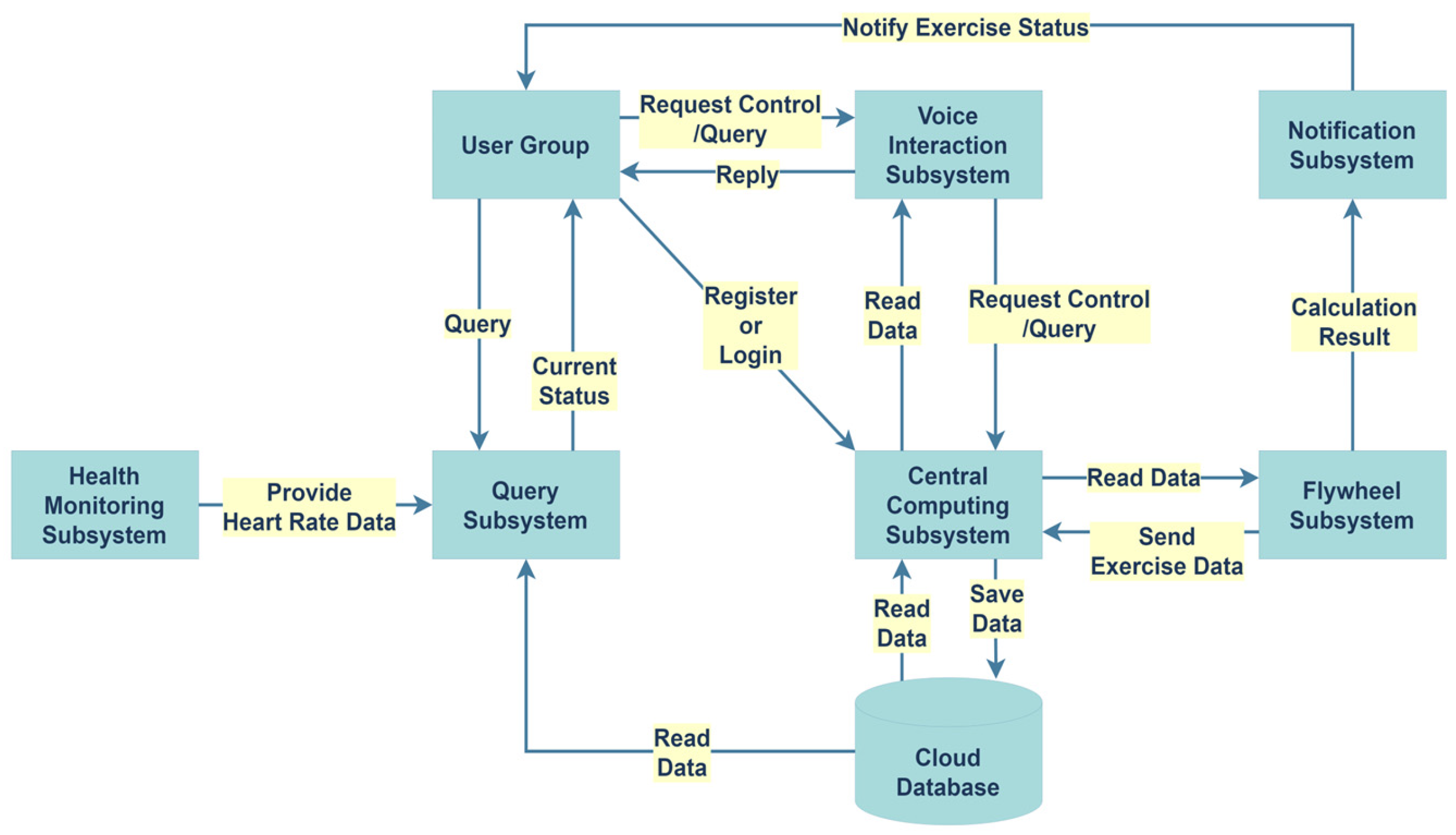









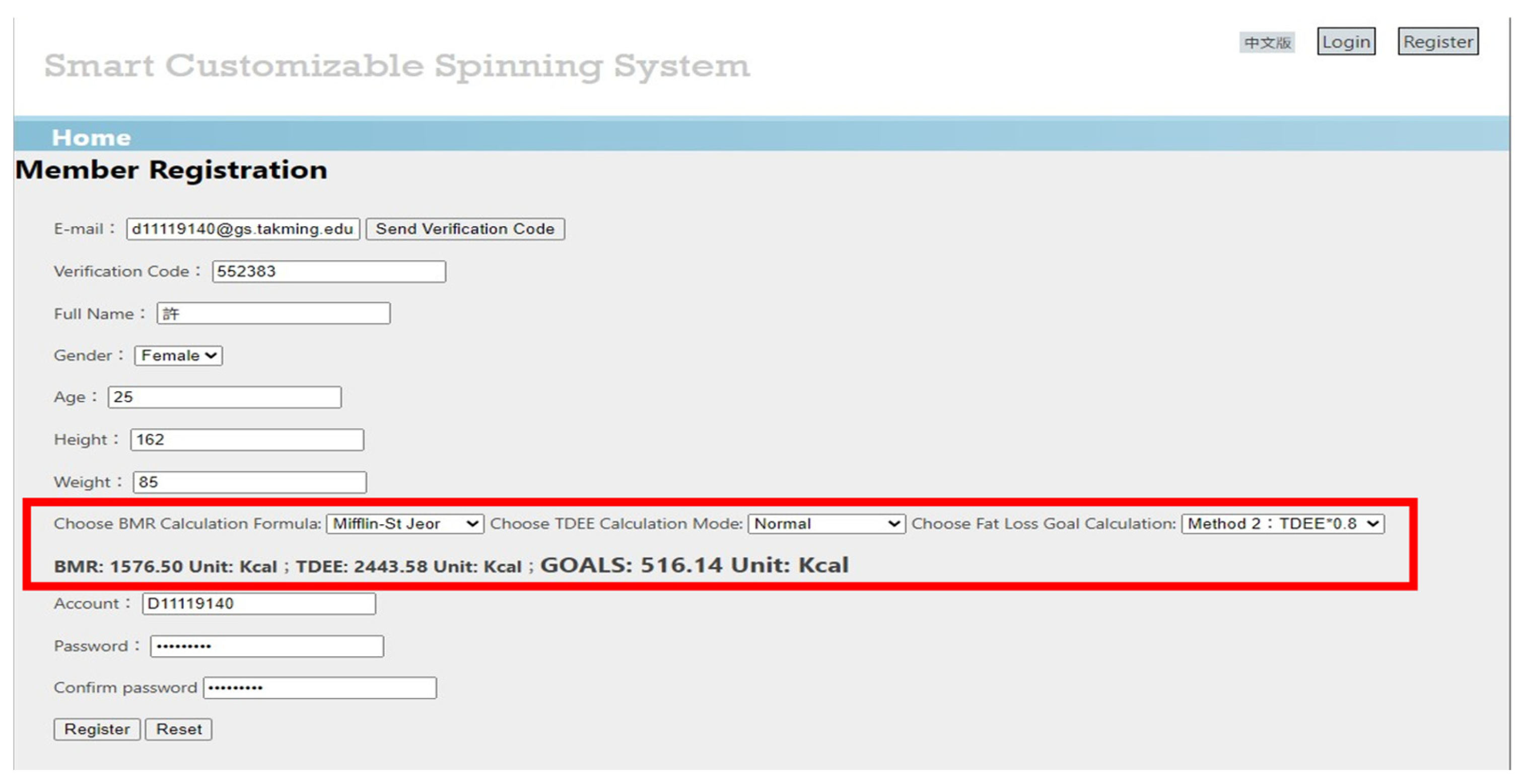
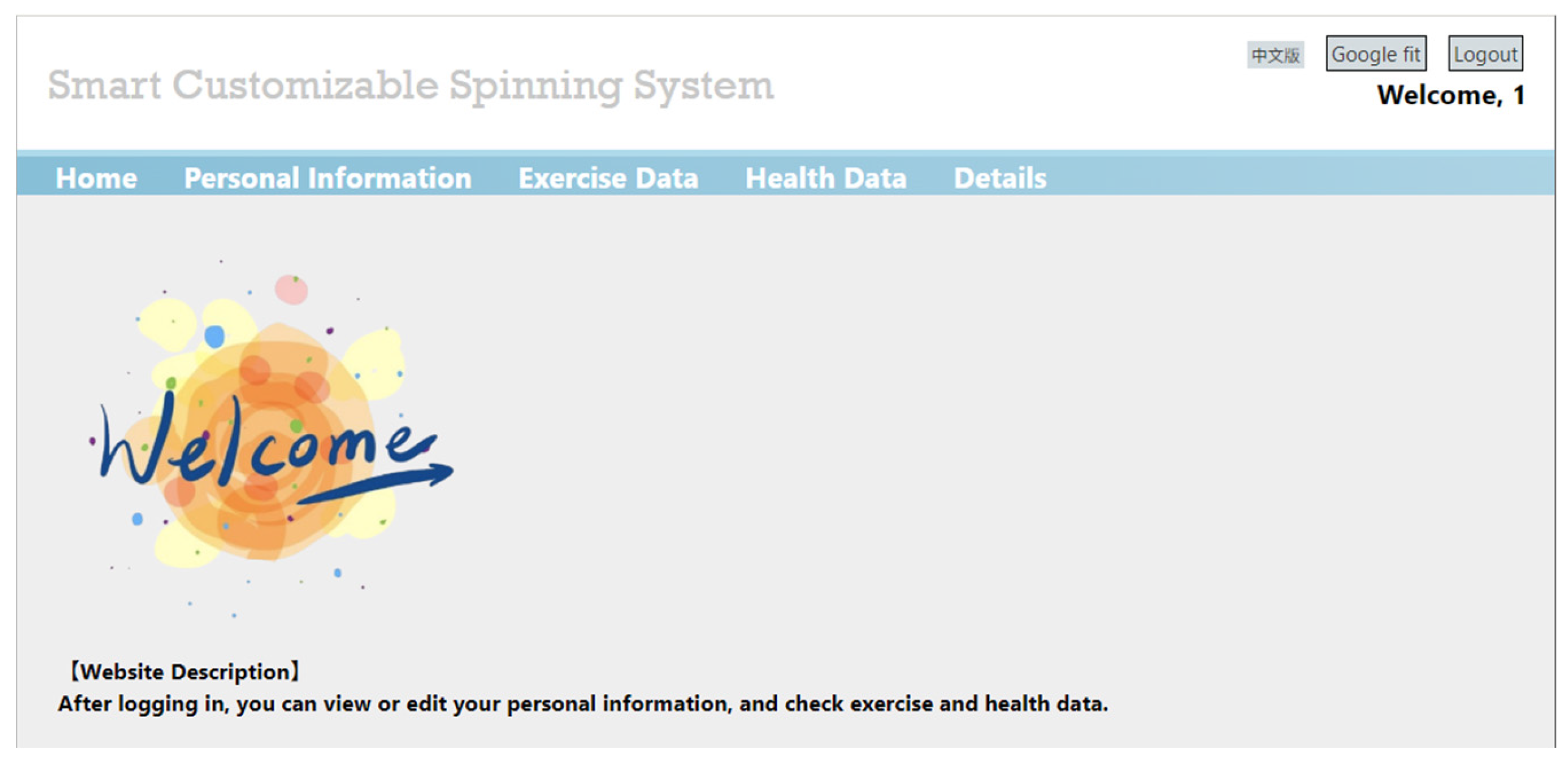

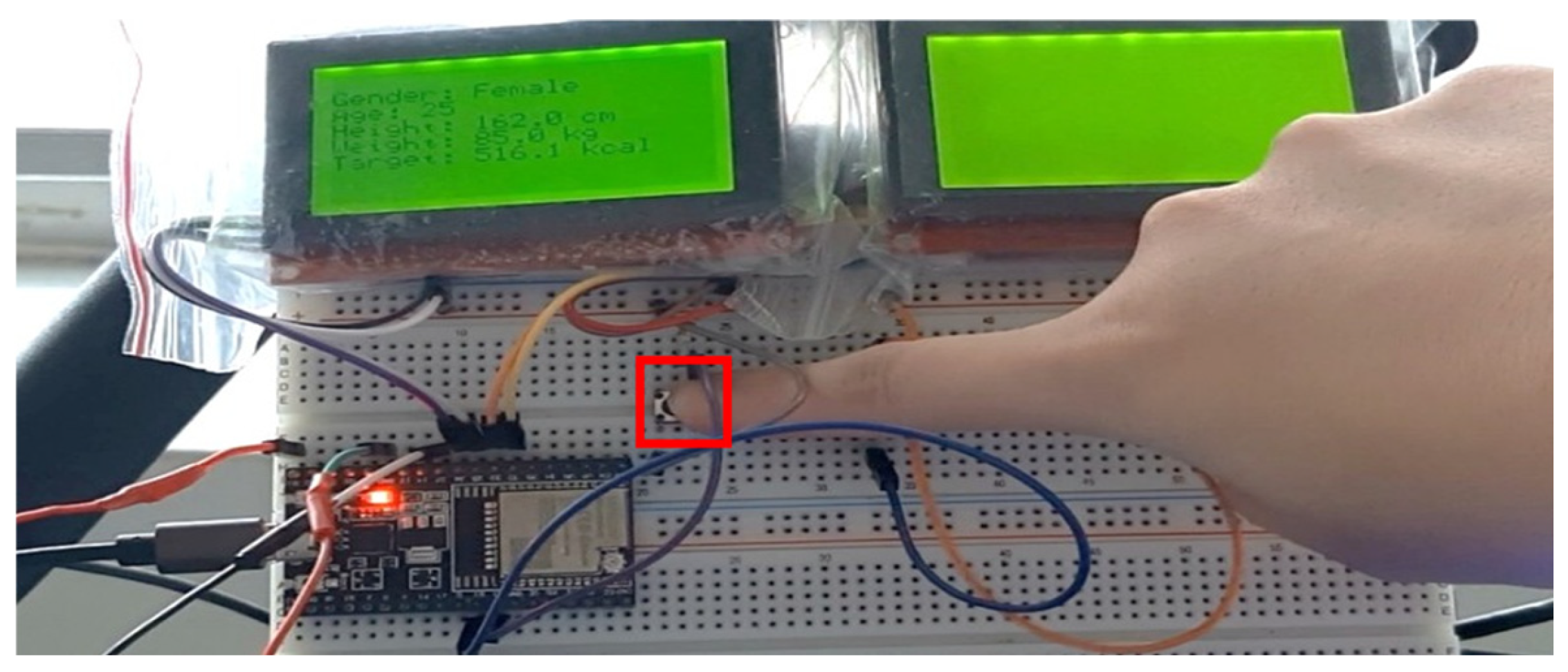
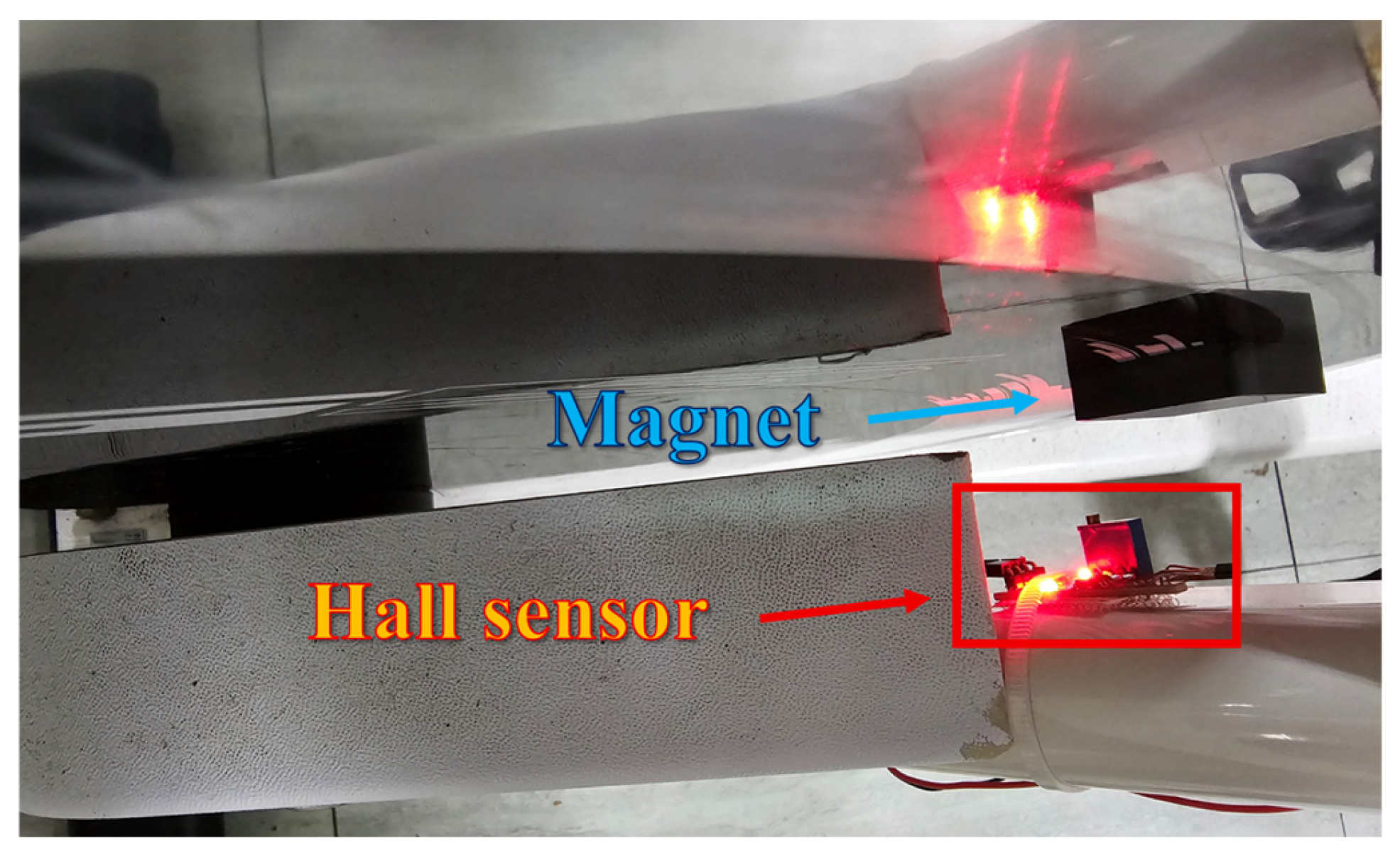
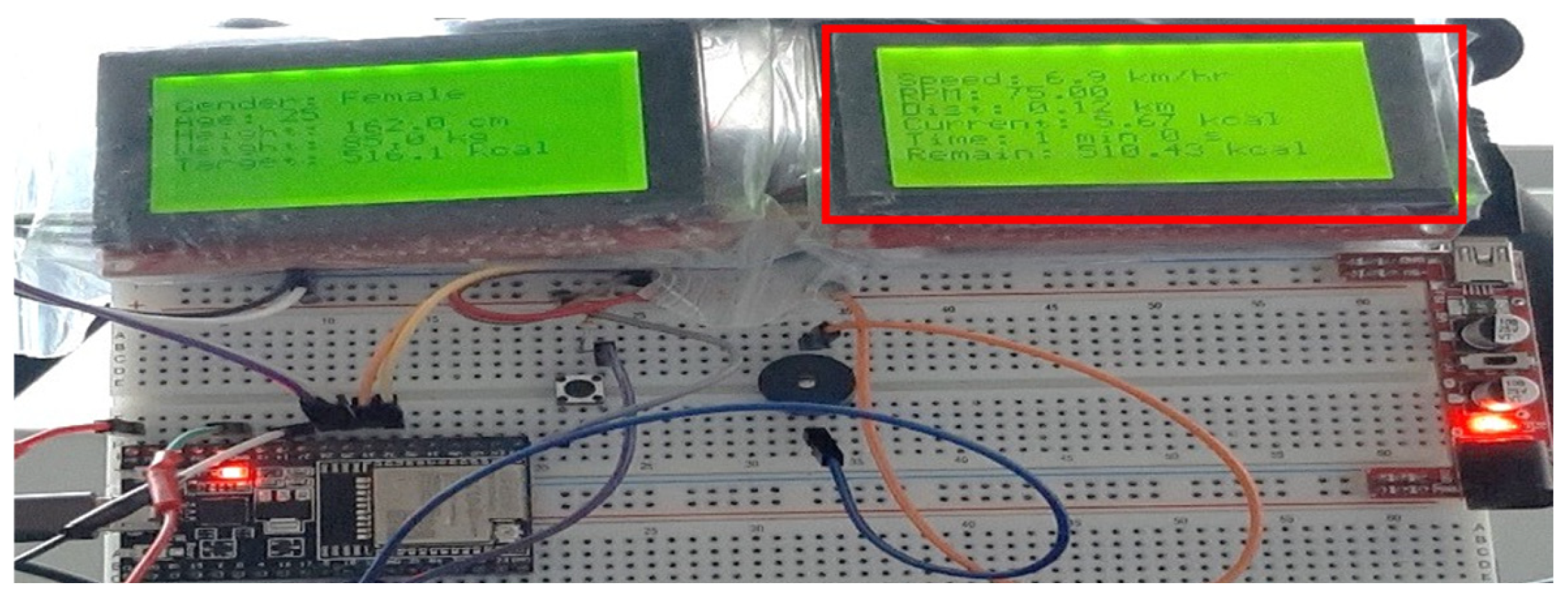
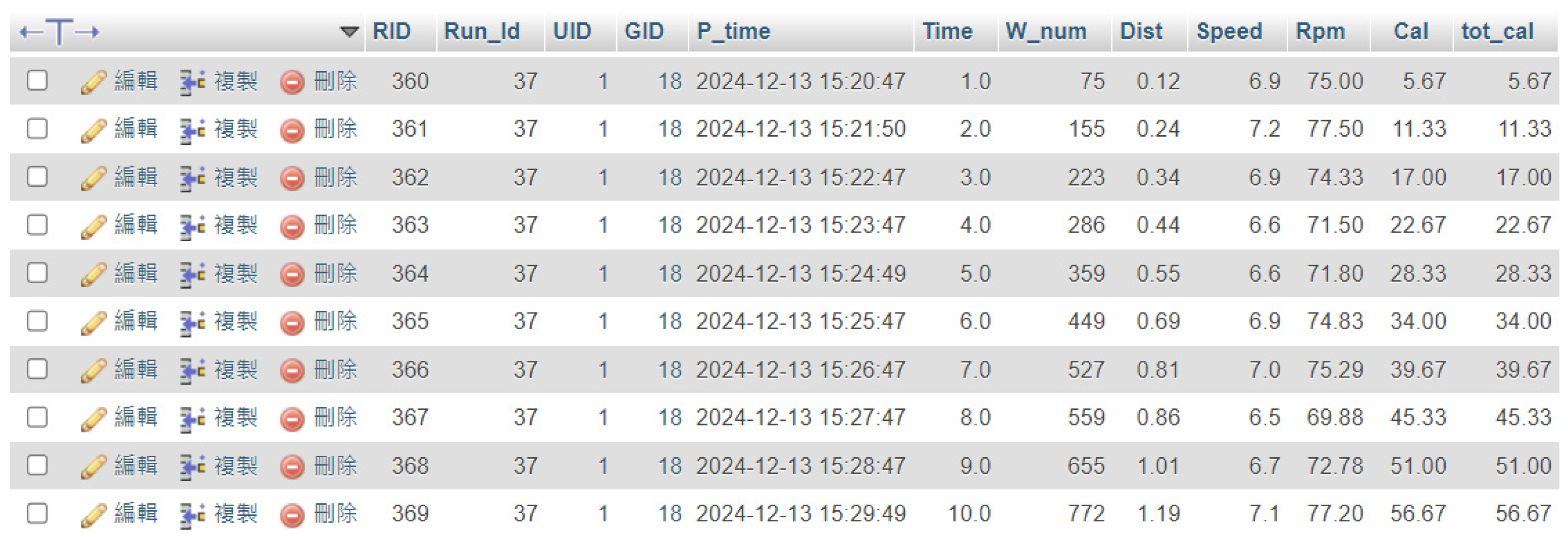
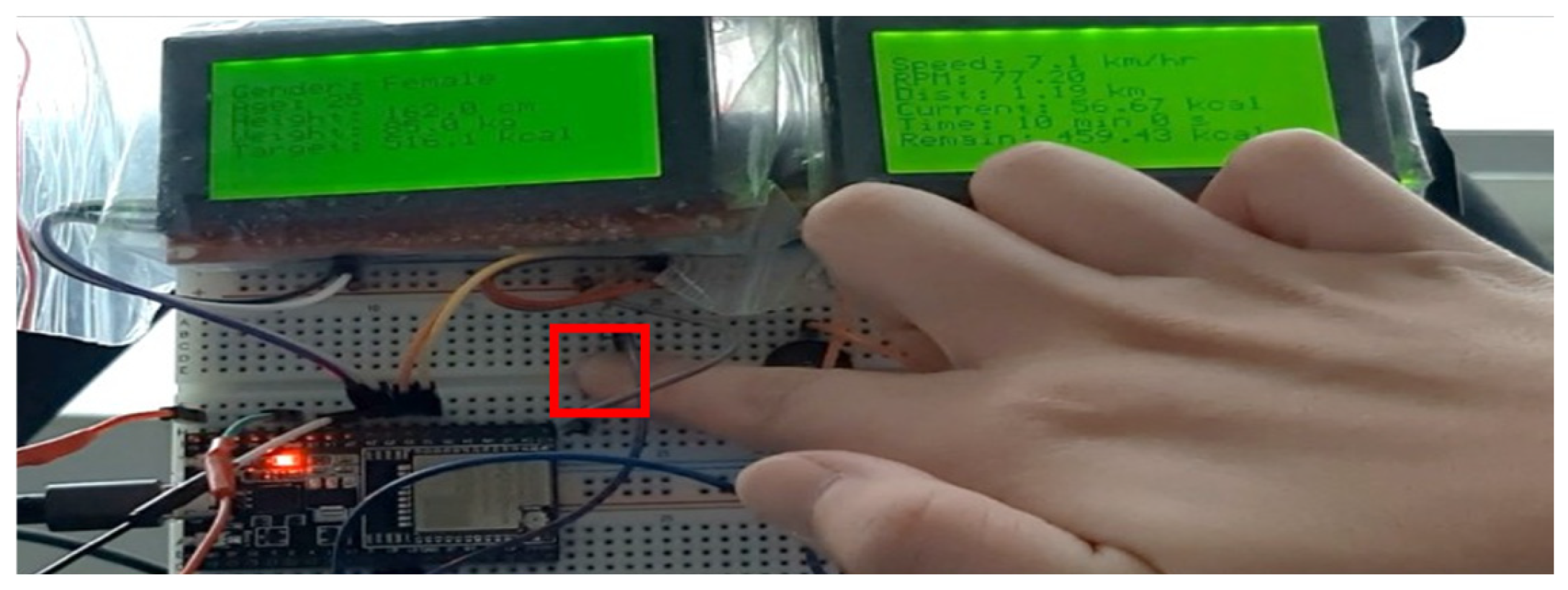

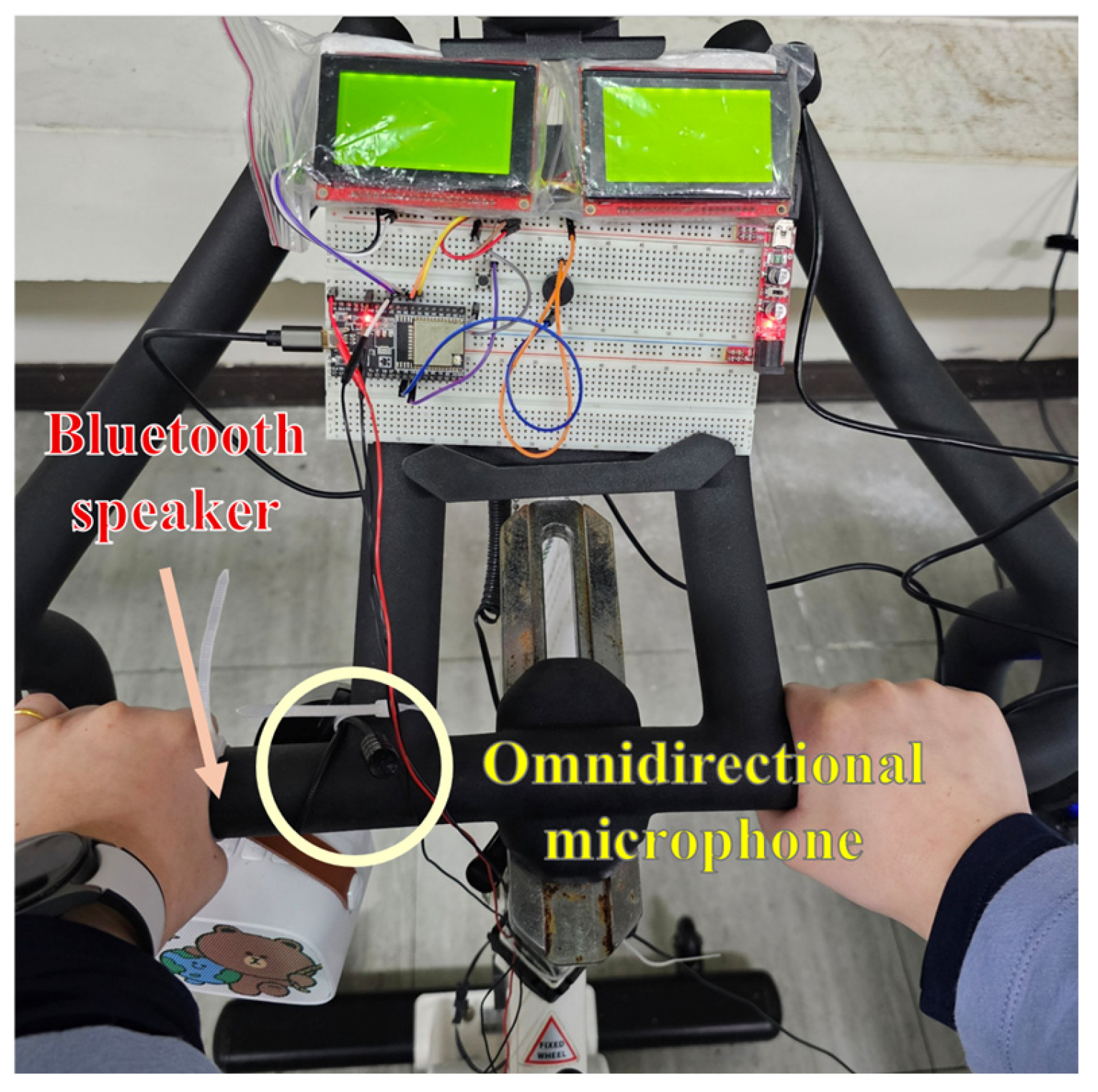

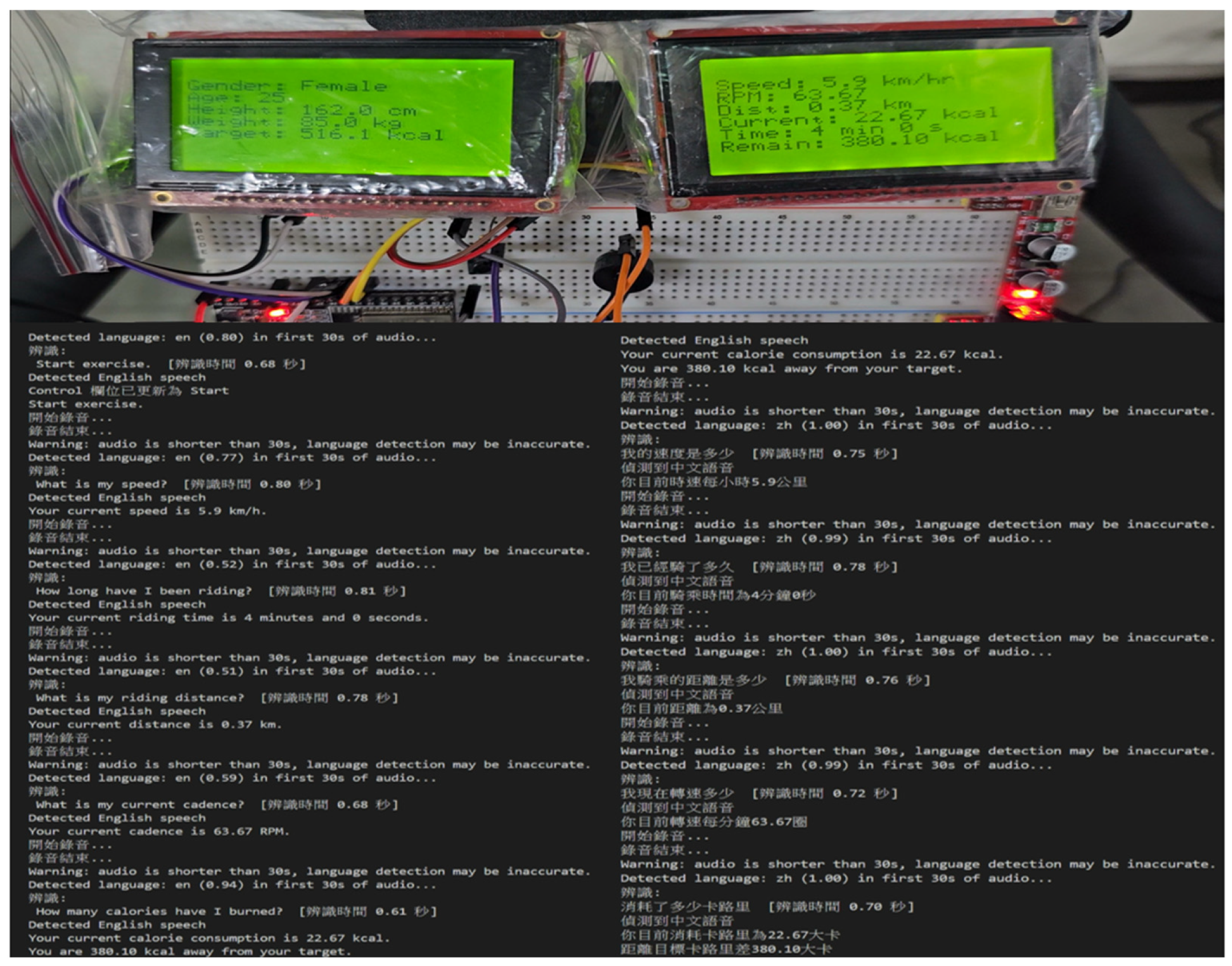
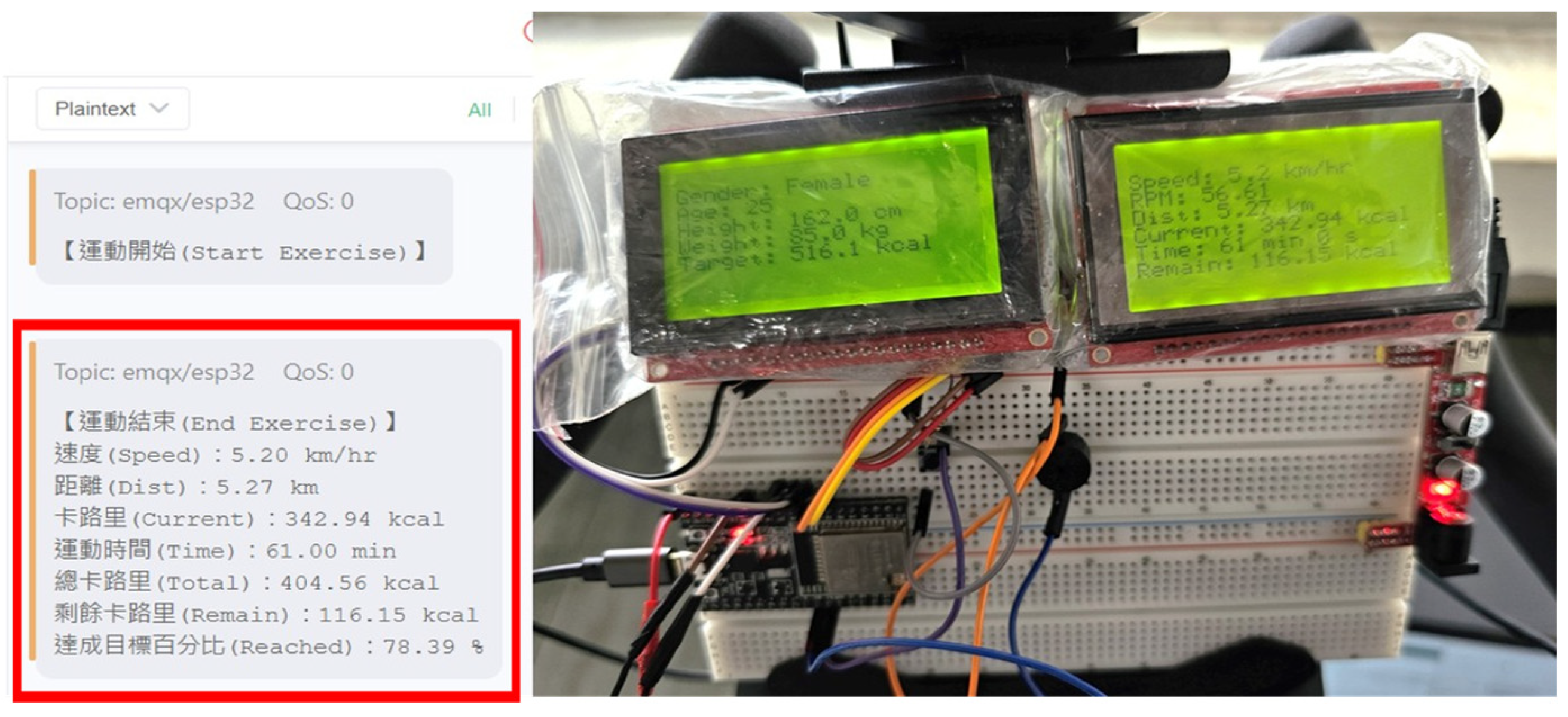
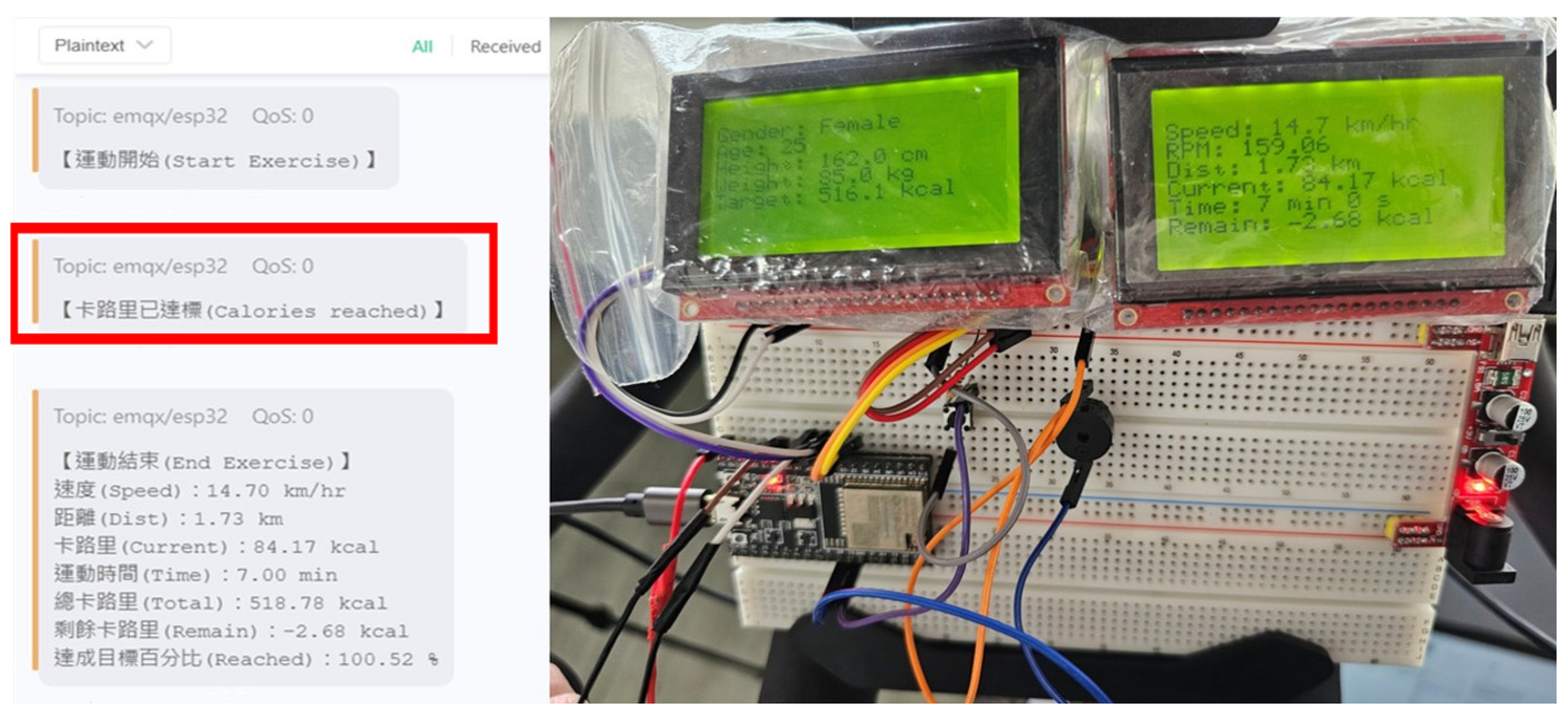
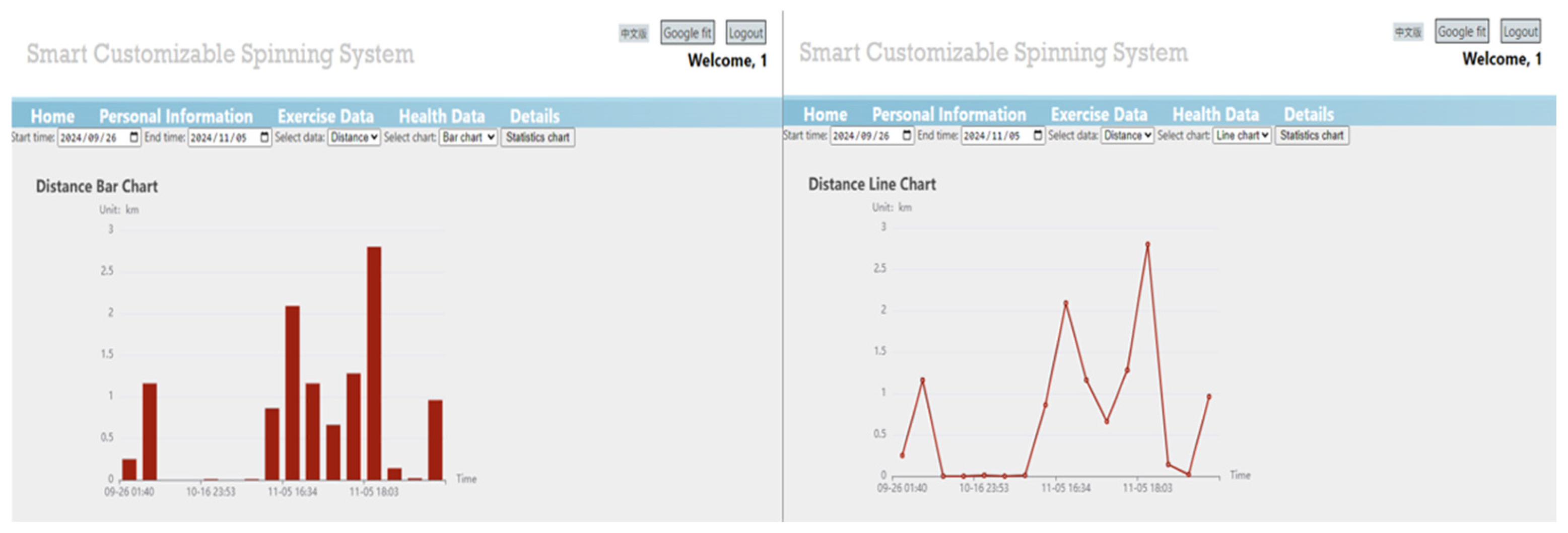
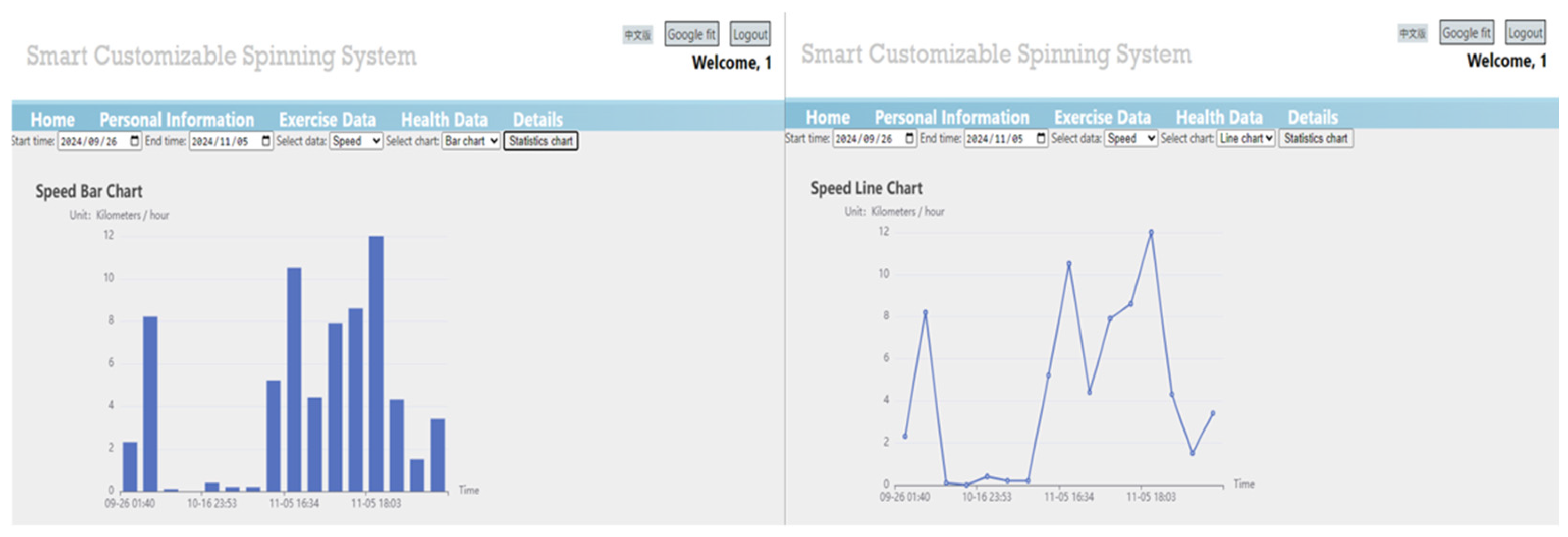

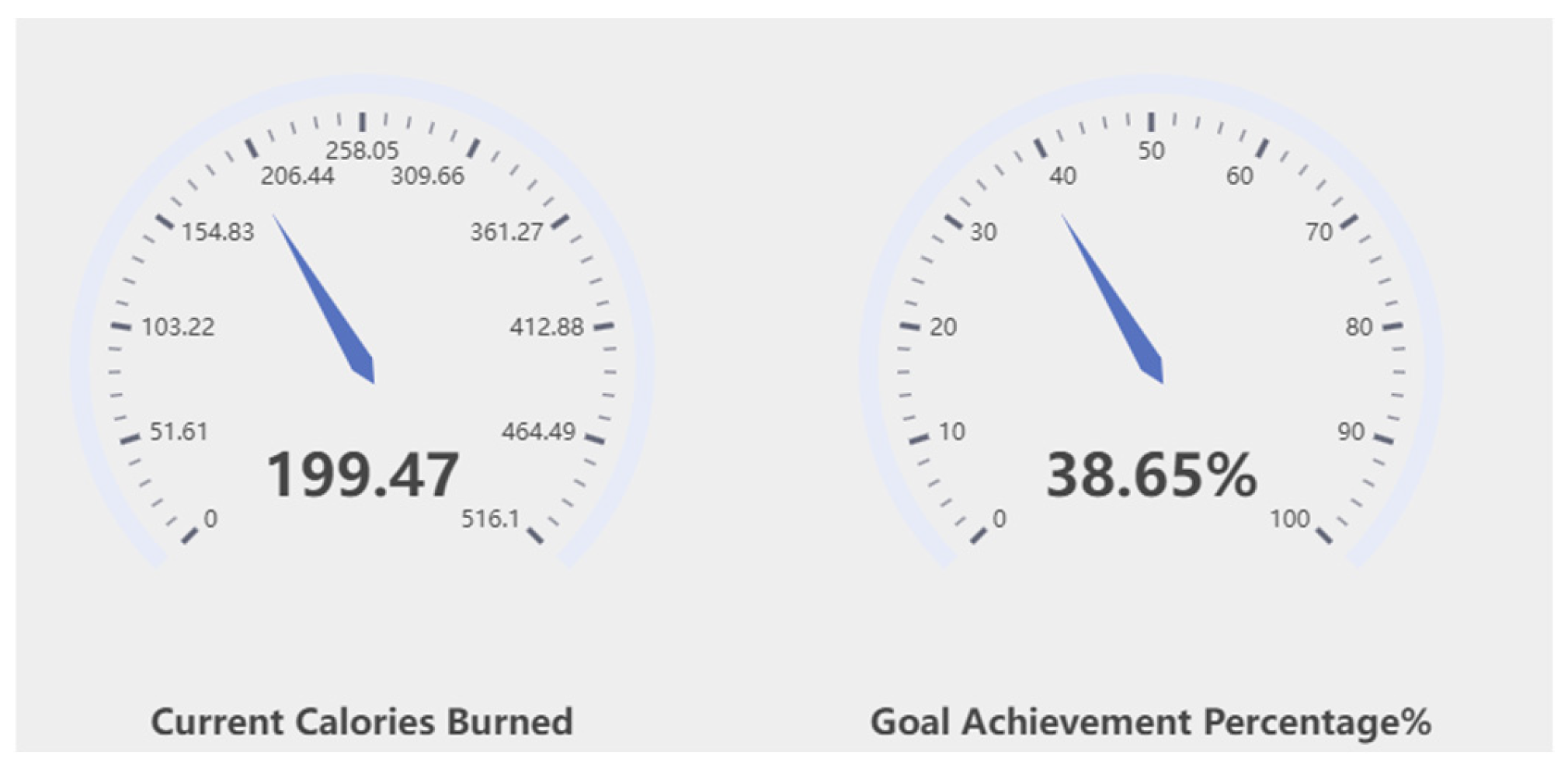
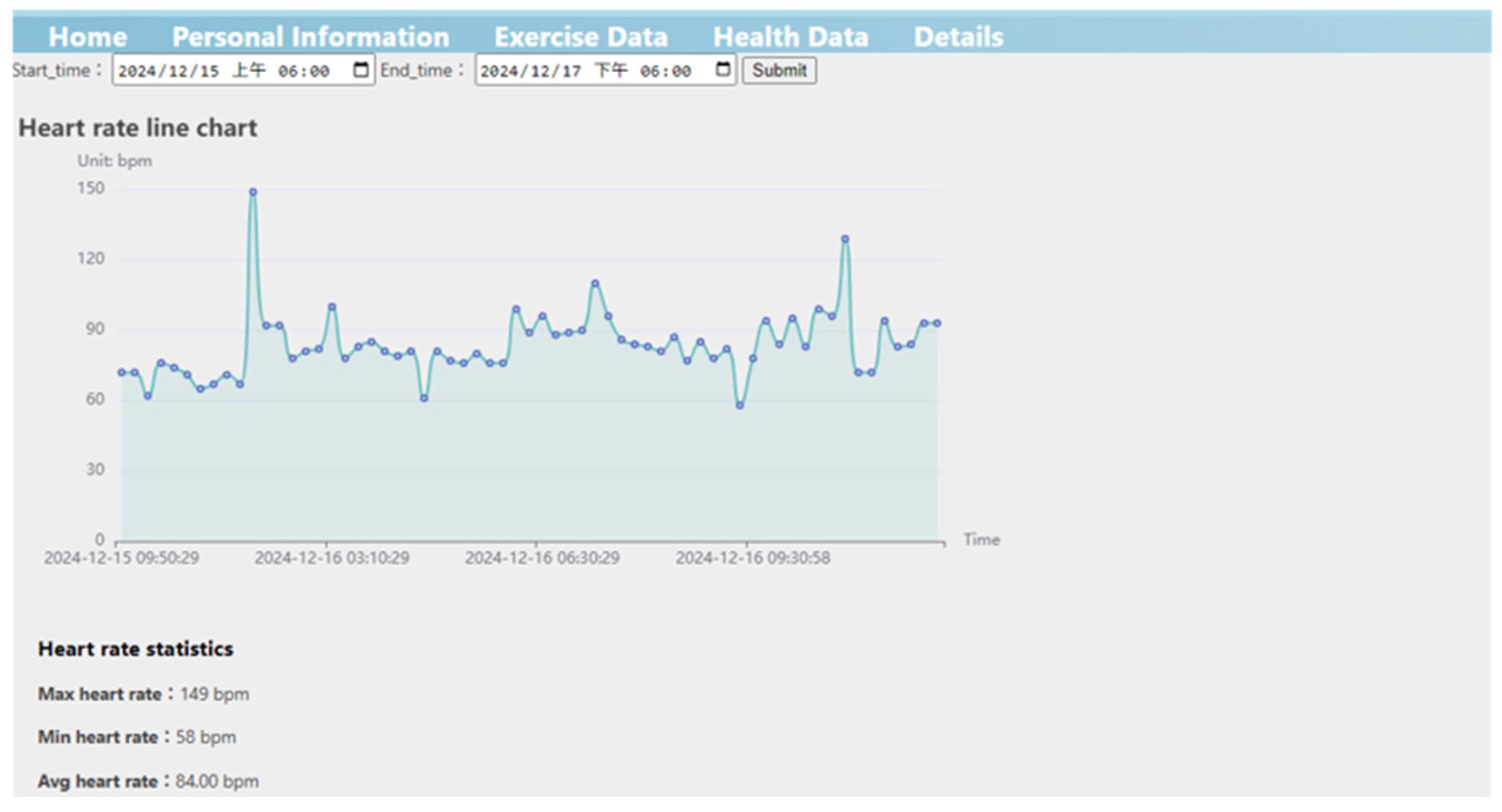
| Field | Unit |
|---|---|
| Gender | Male/female |
| Age | years |
| Height | cm |
| Weight | kg |
| Target | kcal |
| Field | Unit |
|---|---|
| Speed | km/h |
| RPM | rpm |
| Dist | km |
| Current | kcal |
| Time | min |
| Remain | kcal |
| Model | Capacity | Vram | Relative Speed |
|---|---|---|---|
| Tiny | 39 M | ~1 GB | ~32× |
| Base | 74 M | ~1 GB | ~16× |
| Small | 244 M | ~2 GB | ~6× |
| Medium | 769 M | ~5 GB | ~2× |
| Large | 1550 M | ~10 GB | 1× |
| Object | Model | Count | Success Rate | Response Time | Local/ Cloud |
|---|---|---|---|---|---|
| Whisper (GPU) | Small | 15/25 | 60% | 0.35 s | Local |
| WhisperX (GPU) | Small | 17/25 | 68% | 0.22 s | Local |
| Whisper (GPU) | Medium | 24/25 | 96% | 0.65 s | Local |
| WhisperX (GPU) | Medium | 24/25 | 96% | 0.43 s | Local |
| Distance (cm) | Success Rate (%) |
|---|---|
| 0–40 | ≈80 |
| 40–80 | ≈83.3 |
| 80–100 | ≈80 |
Disclaimer/Publisher’s Note: The statements, opinions and data contained in all publications are solely those of the individual author(s) and contributor(s) and not of MDPI and/or the editor(s). MDPI and/or the editor(s) disclaim responsibility for any injury to people or property resulting from any ideas, methods, instructions or products referred to in the content. |
© 2025 by the authors. Licensee MDPI, Basel, Switzerland. This article is an open access article distributed under the terms and conditions of the Creative Commons Attribution (CC BY) license (https://creativecommons.org/licenses/by/4.0/).
Share and Cite
Lin, W.-C.; Hsu, Y.-W.; Yu, W.-L. Smart Customizable Spinning System. Eng. Proc. 2025, 108, 46. https://doi.org/10.3390/engproc2025108046
Lin W-C, Hsu Y-W, Yu W-L. Smart Customizable Spinning System. Engineering Proceedings. 2025; 108(1):46. https://doi.org/10.3390/engproc2025108046
Chicago/Turabian StyleLin, Wei-Chuan, Yu-Wen Hsu, and Wan-Lin Yu. 2025. "Smart Customizable Spinning System" Engineering Proceedings 108, no. 1: 46. https://doi.org/10.3390/engproc2025108046
APA StyleLin, W.-C., Hsu, Y.-W., & Yu, W.-L. (2025). Smart Customizable Spinning System. Engineering Proceedings, 108(1), 46. https://doi.org/10.3390/engproc2025108046





